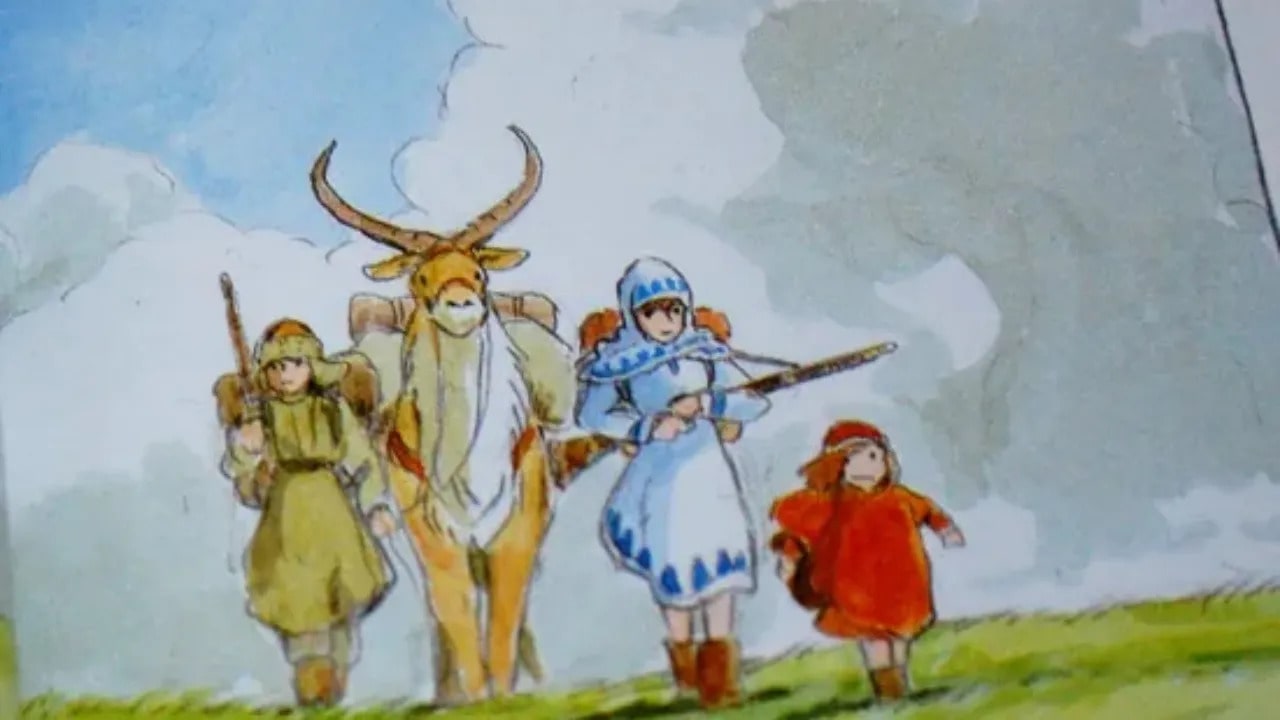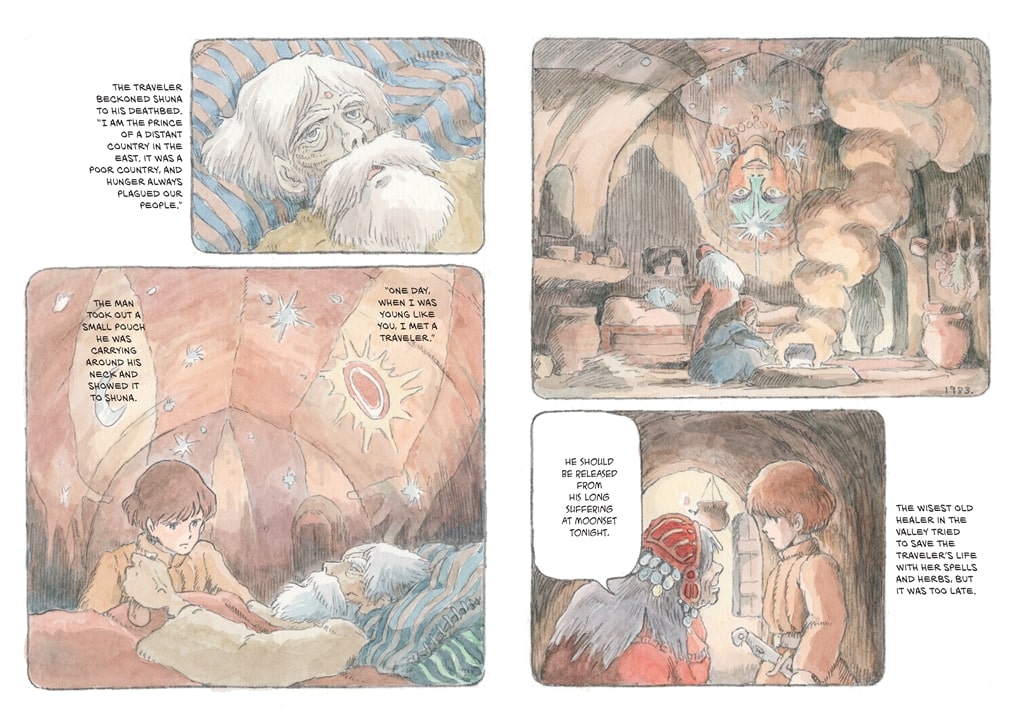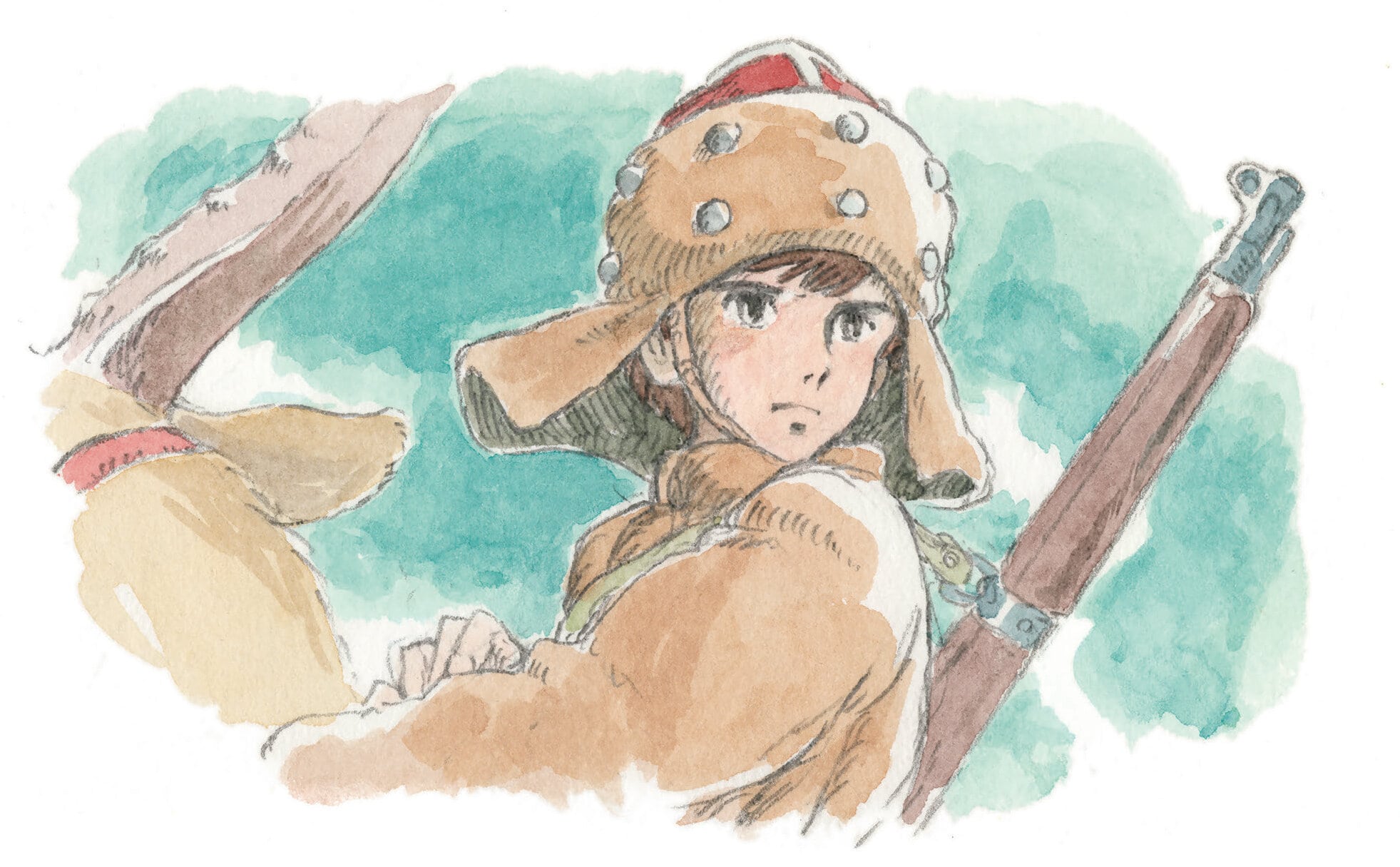The 2023 Will Eisner Comic Industry Awards announced its winners at Comic-Con International San Diego, with Hayao Miyazaki’s “Shuna’s Journey” (translated by Alex Dudok de Wit) claiming the prestigious Best U.S. Edition of International Material-Asia award.
It’s no surprise a work by the iconic Hayao Miyazaki won yet another award, and we’re sure you’re not surprised either. Born on January 5, 1941, Miyazaki grew up to become one of the greatest filmmakers, animators, and mangaka of all time.
Miyazaki’s work is known for its imaginative storytelling, stunning visuals, and deep emotional layers that touch the deepest parts of your mind, heart and soul, and Shuna’s Journey did exactly that. Debuting as a single-volume watercolour-illustrated graphic novel, Shuna’s Journey has now won an Eisner Award. Honestly, what can’t Hayao Miyazaki do?
From “Gulliver’s Travels Beyond the Moon” (1965) to “Hols: Prince of the Sun” (1968), Miyazaki’s initial works gained immense recognition and soon his passion for animation and direction and his works at Toei Animation became a legendary tale.
About Shuna’s Journey
Shuna’s Journey was originally published as a single softcover booklet on 15 June 1983 by Tokuma Shoten under its Animage Ju Ju Bunko imprint. The graphic novel was later adapted into a 60-minute radio drama and aired in Japan on NHK FM in 1987.
In February 2022, First Second Books announced that they had acquired the licensing rights for the title, and an English edition was subsequently released in the United States on November 1, 2022.

In the afterword of the Shuna booklet, Hayao Miyazaki revealed that his inspiration for the novel came from the Tibetan folktale “The Prince who became a Dog.” The tale narrates the story of Prince Achu, who saves his people by stealing barley from a serpent king but is transformed into a dog as punishment.
Only the love of a young girl brings him back to his human form, and he returns with the grain to help his people. Miyazaki initially intended to create an animation based on the folktale but was rejected due to its simplicity.
Consequently, with the support of several publishers, he turned it into a graphic novel. Kentaro Takekuma later linked Miyazaki’s stylistic inspirations to his childhood adventures, pointing out his 1969 illustrated story “People of the Desert” as a forerunner to “Shuna’s Journey.”
The Plot of Shuna’s Journey
In a tale of determination and hope, Shuna, the prince of an impoverished land, witnesses the never-ending struggle of his people as they harvest scarce grain, leading them to exhaustion and despair. When a traveller hands him seeds from a mysterious western land, Shuna embarks on a quest to discover the source of the golden grain, hoping for a brighter future for his people.

Along his journey, he encounters Thea, a girl he rescues from captivity, but their paths diverge as they face new challenges. As Shuna ventures toward the Land of the God-Folk in pursuit of the golden grain, uncertainty hangs in the air over his reunion with Thea and the prospect of safely returning home.
About the Author
Hayao Miyazaki was born on January 5, 1941, in Tokyo, Japan. Miyazaki’s love for animation began at an early age when he was blown away by the works of Osamu Tezuka, the “God of Manga,” and the founder of modern manga and anime. He later pursued a degree in political science and economics but became a legend in the animation world.
Miyazaki’s career truly kick-started when he co-founded Studio Ghibli in 1985 along with Isao Takahata and others. The studio became known for high-quality animated films and produced a long list of critically acclaimed and commercially successful movies.
Miyazaki officially announced his retirement multiple times, but his undying love for animation and storytelling drew him back to work on new projects. Despite the challenges of ageing, he created masterpieces like “The Wind Rises” (2013), a fictionalized biopic of aircraft designer Jiro Horikoshi.


